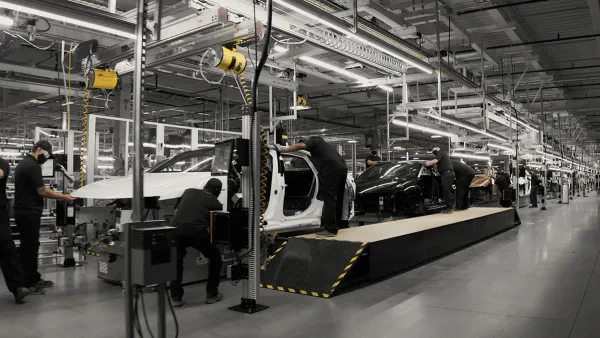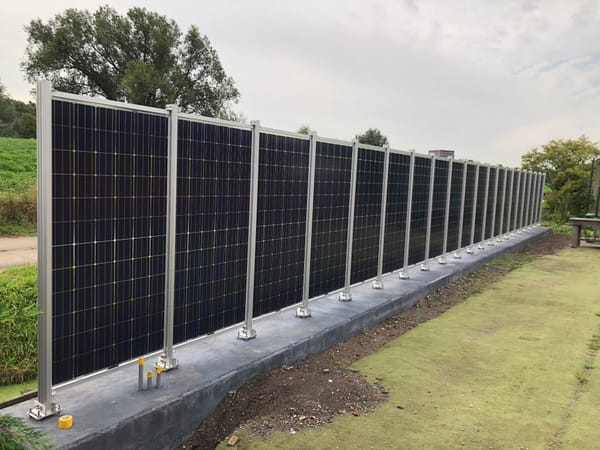First edition! U.S. EV rules aim to revamp car sales
U.S. EV rules aim to revamp car sales. Also stuff about carbon capture, backed up grids, and rising sea levels
Chart of The Day
1. U.S. government moves to make EVs 69% of new car sales by 2030
New rules proposed by the U.S. Environmental Protection Agency would shift American new EV car sales from 5.8% in 2022 to as much as 69% in 2032. The rules are rooted in EPA’s mandate to regulate vehicle particulate and greenhouse gas emissions. But, the Biden Administrations' big move comes with a few obstacles:
- EVs will cost more than internal combustion engines (ICE). The EPA estimated that its proposal would add an incremental cost of $844 for cars and $1,385 for trucks in 2032, but a car owner is expected to save $12,000 on fuel and maintenance over vehicle life.
- Many buyers are counting on a $7,500 tax credit for EVs, but few models produced today will get the full tax break due to Made In America standards set by the Inflation Reduction Act. Just five of the 91 electric car models now sold in the U.S. clearly qualify. Those all came from American automakers, with General Motors, Ford, and Tesla leading the pack.
- There aren’t nearly enough chargers to serve the needs of America’s new electric fleet, one report estimates the U.S. will need 2 million more EV chargers by 2030 to serve 23 million EVs on the road.
- It’s going to be difficult to source enough mining materials in the U.S. and trade allies to build all the batteries we’ll need by 2030.
- The rules address new cars, but we’ll still have many used ICE vehicles on the road. The average car age is 12 years, according to one study.
Also, here’s a nifty guide from WaPo on whether or not you should consider buying an EV today.
Climatewire / Politico / U.S. EPA
2. Occidental Petroleum starts up a carbon capture system
The challenge of reversing global warming requires not only moving to a carbon-zero economy, but also removing all the excess carbon already in the atmosphere. The Inflation Reduction Act (IRA) expanded a tax credit that encourages big oil drilling companies like Occidental Petroleum to suck CO2 out of the air and then sequester it by injecting it into the ground. Recently, Occidental fired up a carbon capture project that cost more than $1 billion.
- 45% of Occidental’s expected initial costs per metric ton are covered by IRA tax credits.
- The plant’s fans will pull up to 500,000 metric tons of carbon dioxide from the air a year, about as much as 111,000 American cars spew out annually.
- The company says it wants to build up to 135 such plants by 2035. That would be enough to compensate for 14.8 million internal combustion engine cars. Today there are 285 million vehicles on American roads.
Meanwhile, another group of projects to repurpose Midwestern oil and gas pipelines for carbon capture and sequestration are moving forward, despite state-level opposition.
3. Renewables are backed up in queue to connect to the grid
Before you can begin construction of a power source, you need approval to connect to the grid. Often, grid interconnection agreements – which are essentially managed by regional utility companies who run their own power plants – can take up to three years. Once approved for interconnection projects usually take about two years to build and power up, but on average, only 21% of projects approved for interconnection come to fruition, due to lack of capital or lack of construction resources. Right now, there’s more than 2 terawatts of energy projects awaiting interconnection, 50% more than today’s total generation capacity, and 96% of the projects are renewables or battery storage projects, according to a recent report from Lawrence Berkeley National Laboratory.
- Solar and battery storage are – by far – the fastest growing resources in the queues. Combined, they account for over 80% of new capacity entering the queues in 2022.
- Interconnection wait times are also on the rise: The typical duration from connection request to commercial operation increased from less than 2 years for projects built in 2000-2007 to nearly 4 years for those built in 2018-2022.
4. Southeastern U.S. sea levels inexplicably rising faster than average
A new study released Monday finds that sea level in the Southeastern U.S. is rising much faster than anticipated, as much as 10 millimeters per year. The most recent U.N. IPCC climate study predicted global annual sea level rise would average 3 millimeters. The increased rise means bigger impacts from hurricanes and storm flooding.
- Meltwater from the world’s shrinking glaciers and ice sheets has contributed to a global acceleration in sea-level rise — but it doesn’t fully explain the pattern happening on U.S. coastlines, say researchers.
- One possible explanation may be more rapidly warming water in the Caribbean and South Atlantic, say researchers, causing the oceans to increase in volume.





